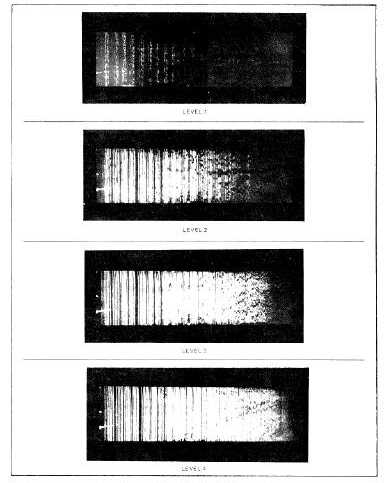T.O. 33B-1-1
2-36
produce duplicate fatigue cracks with identical penetrant performance characteristics. Therefore, non-qualification
sensitivity comparison tests, which are not used for qualification purposes, may be accomplished with cracked chrome
plated panels.
2.4.4.3.2
Figure 2-10 illustrates the effects of different sensitivities by showing the indications produced on cracked chrome
panels by penetrants of different sensitivity levels.
Figure 2-10. Indications Produced by Penetrants of Four Different Sensitivity Levels Using Dry Developer.
2.4.4.3.3
Selection of the sensitivity level to be used depends on a number of factors: potential flaw size, width of opening and
volume of the discontinuity; part size, shape, surface finish and residual stress; allowable flaw size; and intended
service of the part. The rule is to use the lowest sensitivity that will reveal the discontinuities that are large enough to
affect the integrity of the part. Difficulties can be experienced if the sensitivity level is either too low or too high. Low
sensitivity levels may not reveal critical flaws, while excessive sensitivity can result in an excessive residual
background that would obscure any discontinuity indications or nonrelevant indications.


